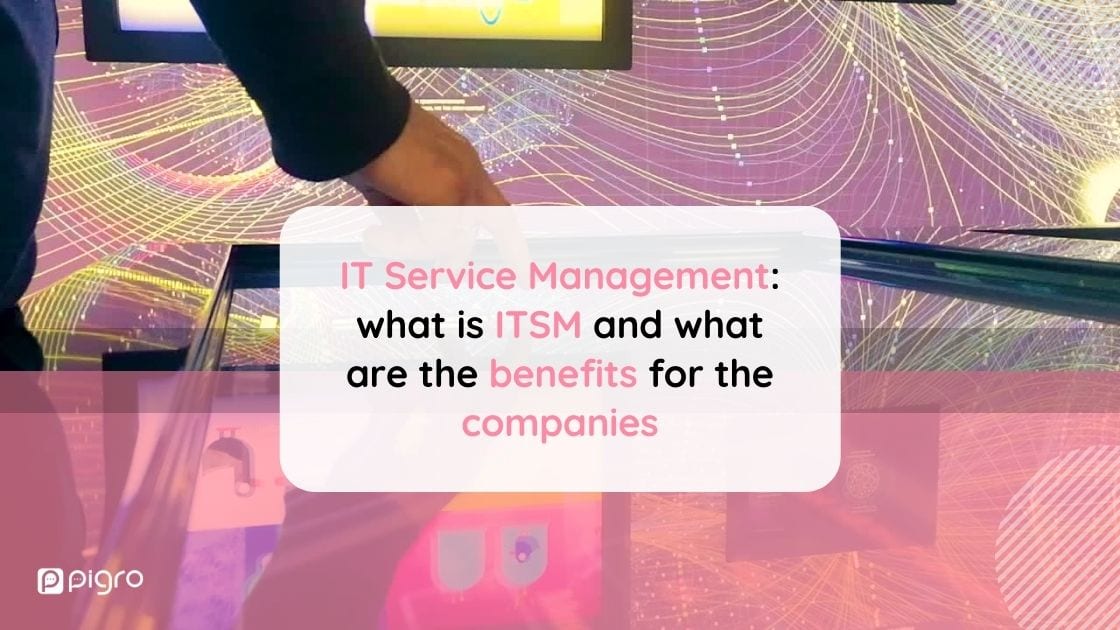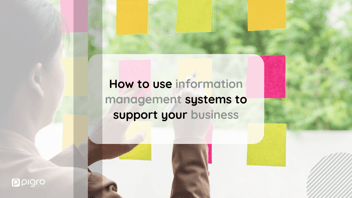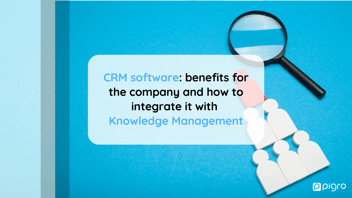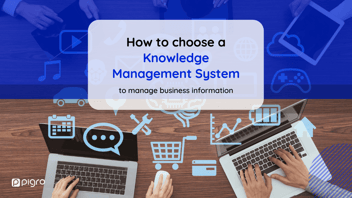The objective of ITSM is to relate the Information Technology activities carried out by an organization to all stakeholders, i.e. all those figures between business, customers, and users.
What is IT Service Management
According to the definition of ITSM (IT Service Management) it is a true discipline that aims to design and manage Information Technology systems in organizations.
In defining the best strategy, it also outlines the roles and responsibilities of each figure and department that relates to IT services. The main benefits to the organization are increased productivity, reduced business costs, and improved customer satisfaction.
The founding element on which ITSM acts are the business processes, in particular those of back-office, related to IT management and information systems involving the entire company, rather than the specific technologies developed.
In fact, the ultimate goal of Service Management in IT is to deliver IT as a service (rather than just as support), to meet customer needs, and continuously improve business performance.
The IT service management strategy aims to describe processes and tools used by teams comprehensively, encompassing all information technologies within the organization. This makes it a good idea to be clear about the goals of the IT department and align them with those of the entire company and its mission.
The benefits of an ITSM strategy for employees
There are several key benefits of implementing the right IT service management system. Some relate to the business as a whole, such as increased business productivity, which in turn results from more effective alignment on business objectives and clearer definitions of roles and responsibilities, making teams more informed. The resulting increased reliability of services means that more value is achieved with less effort.
Specifically, for employees some of the key benefits of ITSM are:
-
Improving IT support: by defining a strategy that includes the appropriate technologies (such as artificial intelligence to automate the simplest and most repetitive actions), support functions can be active 24/7, affecting both the performance and productivity of various business departments.
-
Omnichannel experience: Support channels can be accessed at any time and from almost any device. Better communication of information also enables employees to better understand IT services and use them correctly.
-
Faster resolution of requests and tickets: as a direct result of a better and more efficient organization of IT divisions and information flow, requests and incidents are identified more quickly, responding quickly, before they turn into major problems.
-
Improved process scalability: overall, business processes are more efficient, enabling organizations to manage more IT development without reducing quality, thanks to the implementation of ITSM software.

Related benefits for the end customer and the company
For the final consumer, ITSM meaning translates into as many advantages, which allow for increasing its rate of appreciation towards the organization.
-
Reduced IT problems and better answers: faster receipt and resolution of requests and tickets make responding to the user more efficient, reducing related costs and disruptions.
-
Easy compliance: when talking about regulatory requirements, it becomes easier to comply when you have the support of effective information systems.
-
Better Customer Experience: receiving a customer-oriented and centred service to meet users' needs helps build a positive customer experience, which influences the judgment of the end-users and the customer satisfaction level.
What is a benefit to the user is, clearly, also a benefit to the company, such as:
-
Reduction of company costs: when the goals and competencies of each role and department are clear and shared, there is greater efficiency that saves costs.
-
Technology Development: better circulation of information also makes it possible to respond faster to change and be more innovative.
IT Service Manager: role and competencies
In organizations, there is a specialized figure in charge of developing the ITSM strategy: the IT Service Manager or ICT Service Manager. In addition to the professional skills and level of experience required, which will not be the subject of this article, there are some fundamental activities that this figure performs, in order to develop an ITSM roadmap and choose the right ITSM solutions:
-
Lead all Service Team activities aimed at maintaining efficient services and coordinate with the IT department to implement strategies;
-
Ensure that all best practices and service level agreements (SLA - Service Level Agreement and KPI - Key Performance Indicator) are met;
-
Monitor customer requests and any reports from the department;
-
Develop plans for troubleshooting and service improvements;
-
Ensure that all the interests of stakeholders, internal and external to the company, are respected in the evolution of services;
-
Know the life cycle of company assets in order to direct investments in technological development opportunities.
New developments in ITSM: AI, social media, and the Internet of Things
Artificial Intelligence is undergoing significant development by becoming part of processes and activities, including in the corporate environment. According to McKinsey's survey conducted last year on the use and impact of artificial intelligence globally, 56% of respondents have adopted AI in at least one business function.
In 27% of cases, AI was used for optimizing service operations and in 18% for monitoring and predicting interventions.
As reported by IBM, we are seeing the continued development of what is known as AIOps (AI for IT Operations), which involves the application of machine learning in the operational environment, both in the monitoring and ITSM processes, to better predict outages, prioritize and improve root cause analysis.
As far as the IoT (Internet of Things) is concerned, we know that interconnected devices in our homes and workplaces are becoming more and more widespread. All the data collected by these devices, such as those on geolocation or operation, can be useful to keep under constant control the activities carried out with the IoT; if this technology is applied in the business environment (and in ITSM) they can be valuable as a tool for decision making.
Finally, regarding the omnichannel presence of support and assistance services, the IT Service Manager must take into account the massive use of social media by users to send support requests. Being able to adapt ITSM implementation on social platforms can be a strength especially when it comes to tracking tickets and request history, as well as measuring user opinion.
Read also: Manage IT services with SKMS: Service Knowledge Management System
Do you want more information about Pigro and Knowledge Management? Contact us!



